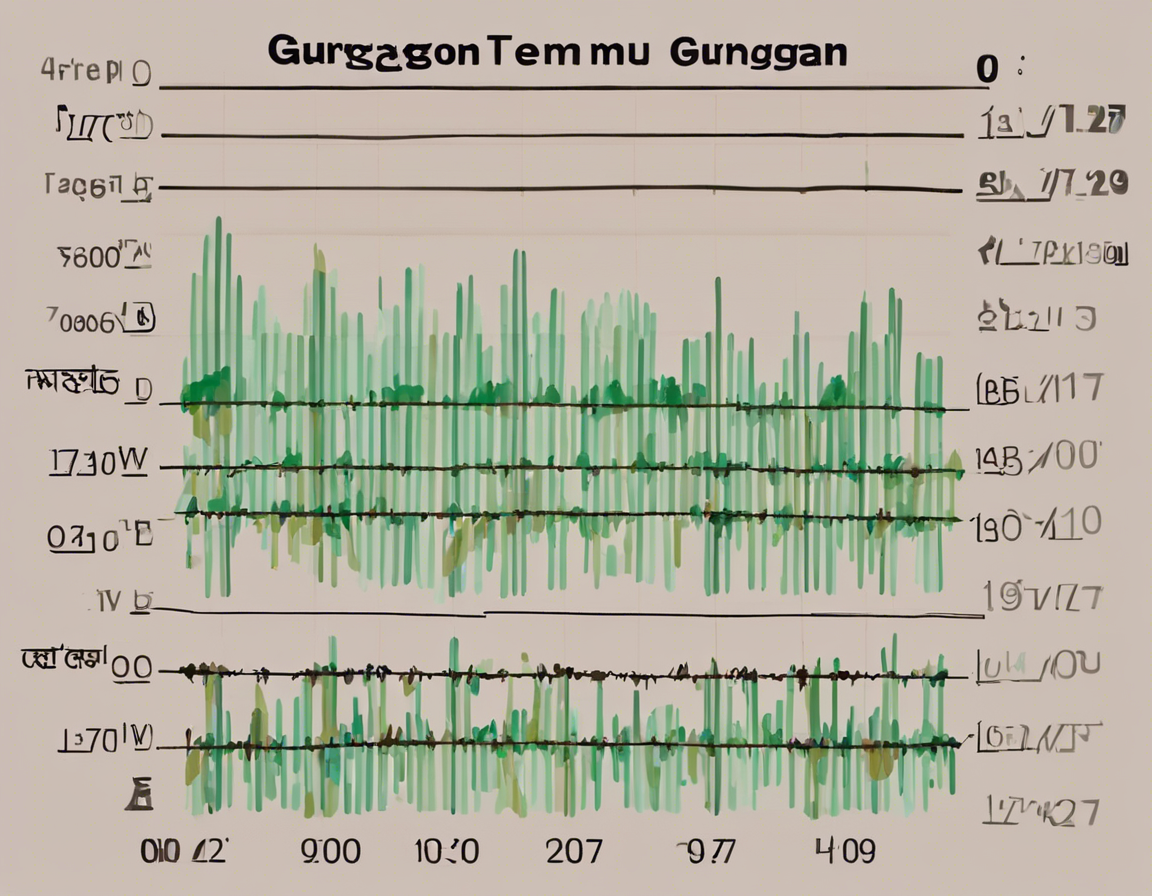Introduction
Gurgaon, now known as Gurugram, is a bustling city in the state of Haryana, India. The city’s weather is greatly influenced by its geographical location, which results in varied temperature trends throughout the year. Understanding these fluctuations can help residents and tourists prepare adequately for different seasons and make the most of their time in the city.
Seasonal Temperature Changes
Summer
Summer in Gurgaon typically spans from March to June, with temperatures soaring high. The city experiences scorching heat during these months, with temperatures often exceeding 40 degrees Celsius. The extreme heat is coupled with dry winds, making it essential to stay hydrated and seek shelter during peak daytime hours.
Monsoon
The monsoon season in Gurgaon arrives in July and lasts until September. This period brings much-needed relief from the sweltering heat, with refreshing rainfall cooling down the city. However, it is important to note that heavy downpours can lead to waterlogging and traffic jams in certain areas, so caution is advised during this time.
Autumn
Autumn in Gurgaon, from October to November, is characterized by pleasant weather and gradually decreasing temperatures. It is considered an ideal time to visit the city, as the weather is neither too hot nor too cold, making outdoor activities more enjoyable.
Winter
Winter sets in from December to February, bringing chilly temperatures to Gurgaon. While the city rarely experiences freezing conditions, the mercury can drop significantly, especially during the night. Warm clothing is a must during this season to stay comfortable and ward off the cold.
Factors Influencing Temperature Trends
Several factors contribute to the temperature trends observed in Gurgaon:
Geographical Location: Gurgaon’s proximity to the Thar Desert in Rajasthan contributes to its hot and arid climate, especially during the summer months.
Urbanization: The rapid urbanization and concrete jungle of Gurgaon have led to the phenomenon of the “urban heat island effect,” where concrete and asphalt surfaces absorb and retain heat, thereby elevating temperatures in the city.
Air Pollution: Gurgaon’s air quality, particularly during the winter months, can impact temperature trends. Smog and haze can trap heat, leading to warmer days and cooler nights.
Green Spaces: The presence of parks and green spaces in Gurgaon plays a crucial role in moderating temperature trends. Trees provide shade, release oxygen, and help cool the surrounding areas, mitigating the effects of urban heat.
Tips for Dealing with Varied Temperature Trends in Gurgaon
Stay Hydrated: Given the high temperatures during summer, it is essential to stay hydrated by drinking plenty of water throughout the day.
Dress Appropriately: Wear light and breathable fabrics during summer to stay cool, and opt for layers during winter to trap body heat.
Plan Outdoor Activities Wisely: Consider the weather forecast before planning outdoor activities, especially during the monsoon season when sudden showers can disrupt plans.
Air Quality Awareness: Keep track of air quality levels, particularly during winter, and take necessary precautions if pollution levels are high.
Utilize Green Spaces: Make use of parks and green areas in Gurgaon to enjoy cooler temperatures and fresher air.
FAQs (Frequently Asked Questions)
Q1: What is the hottest month in Gurgaon?
A1: May is typically the hottest month in Gurgaon, with temperatures often exceeding 40 degrees Celsius.
Q2: Does Gurgaon experience snowfall?
A2: Gurgaon rarely experiences snowfall, as the city’s climate is predominantly dry and arid.
Q3: How can I check the air quality in Gurgaon?
A3: Websites and apps like the Air Quality Index (AQI) provide real-time updates on air quality levels in Gurgaon.
Q4: Are heatwaves common in Gurgaon?
A4: Heatwaves can occur in Gurgaon, especially during the peak summer months, necessitating precautions against extreme heat.
Q5: What are some indoor activities to do in Gurgaon during extreme weather conditions?
A5: Visit malls, museums, art galleries, or indoor entertainment centers to stay cool during hot weather or warm during chilly temperatures.
In conclusion, understanding the temperature trends in Gurgaon is crucial for residents and visitors alike to prepare adequately for the diverse weather conditions experienced throughout the year. By following the tips provided and staying informed about weather forecasts and air quality levels, individuals can stay comfortable and make the most of their time in this vibrant city.
